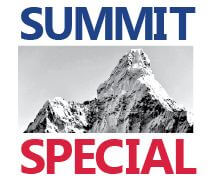A roller coaster ride

Nepal introduced the Foreign Investment and Technology Transfer Act (FITTA) in 1992, but it lags behind South Asian economies and Least Developed Countries (LDCs) in attracting Foreign Direct Investment (FDI), and even the investment that comes in is declining.
Net FDI inflows in Nepal, which stood at $196 million (0.8% of GDP) in 2017 declined by 14% to $169 million (0.6% of GDP) in 2018. FDI inflows crossed the $1.0 billion threshold in Bangladesh, Pakistan and Sri Lanka. India alone attracted $40 billion FDI in 2017. Bhutan, India and Sri Lanka are ranked above Nepal in Doing Business related indicators.

Read also:
Invest in investment, Editorial
Curb corruption before wooing investors, Ramesh Kumar
As Nepal convenes another Investment Summit in Kathmandu this week, investors will be watching if there is any progress in translating the vision of economic prosperity into concrete reform measures. Reviving the investment climate is vital to taking Nepal's economy on a high growth trajectory for mass job creation, raising per capita income and reducing social inequality.
Despite the government declaring Nepal Investment Year 2012/13 and organising an Investment Summit 2017, these campaigns could neither raise FDI levels nor convince investors that it was FDI-friendly. Since 2018, economic growth has rebounded to 6.0%, on average, due to restoration of political stability, improved electricity supply, favorable monsoon and higher tourism arrivals.
Read also:
Nepal, Inc., Suman Joshi
How Nepal can invest in improving the investment climate, Anil Chitrakar
However, poor governance, weak and inadequate infrastructure, and bureaucratic hassles remain deterrents. Nepal ranked 109/140 on the Global Competitiveness Index 2018, 117/163 on the Logistics Performance Index 2018 and 110/190 in Doing Business 2019.
FDI created only 243,540 jobs (1.4% of the labor force) up to mid-July 2018: 46% of FDI is in energy, 18% of FDI is in manufacturing, 18% of FDI is in services and 15% of FDI is in tourism. Small and cottage industries and many agricultural sub-sectors are in the negative list to protect domestic producers even though state support has not raised productivity nor export performance.
Nepal has also become a net food importer, and imported $247 million worth of rice in 2017, higher than the total $215 million in agricultural exports that year. Similarly, the export performance of agro-based products identified under Nepal Trade Integration Strategy 2016 (large cardamom, ginger, and honey) remain dismal due to supply-side constraints affecting overall productivity.
As more than 70% of Nepalis are employed in agriculture, selectively opening some sub-sectors to FDI could raise productivity in both subsistence and cash crops. This would check ballooning imports of food items that contribute to Nepal’s high trade deficit. This will also enable higher value-added production domestically, and enhance supply chains, thus creating strong backward linkages in terms of skilled employment.
Read also: Overseas Nepalis not impressed, Sewa Bhattarai
Nepal can take a cue from India’s Consolidated FDI Policy 2017, which allows an automatic entry route into various agricultural sub-sectors up to 100% but bars FDI totally in other farm sub-sectors. Vietnam, with net FDI inflows of $14.1 billion in 2017, does not maintain a negative list of industries but maintains foreign equity caps, mostly in the service sector.
A single large infrastructure project such as the export-oriented Arun III Hydroelectric Project will add $1.4 billion to Nepal’s FDI stock. The recently-introduced hedging regulations are likely to mitigate some of foreign exchange risks around FDI and encourage further investment in the energy and infrastructure sectors.
New luxury hotels set up by international hotel chains outside the Kathmandu-Chitwan-Pokhara triangle will diversify the tourism sector, which has the potential to create many better jobs and help less developed places in Nepal. The success of the new and amended labour, foreign investment, and industry laws will depend on whether they address risks to investment, allow business flexibility and create a level playing field for both domestic and foreign investors.
Read also: Early investors didn’t sell Nepal short, Lisa Choegyal
Napoli Nepali, Kunda Dixit
Opposition to reforming these laws from various sections of the political class, private sector, and trade unions reveals a deep-seated fear of competition, which is crucial for efficiency and productivity. Investment-related legislations should be regularly reviewed and amended accordingly.
Investors are currently required to obtain approvals from a plethora of government agencies. Investment Board Nepal and Department of Industry should be the only one-stop shops for facilitating investment. Security concerns have again risen against the recent spate of violence, including damage to the property of FDI projects.
Continuation of the stalled public-private dialogue between the government and the domestic private sector under the platform of Nepal Business Forum could go a long way in tackling investment climate bottlenecks at both the national and sub-national levels. This body can also form a task force to identify reforms related to ease of doing business.
Shyamal Shrestha is a member of the Bibeksheel Sajha Party
@ShyamalShrestha




